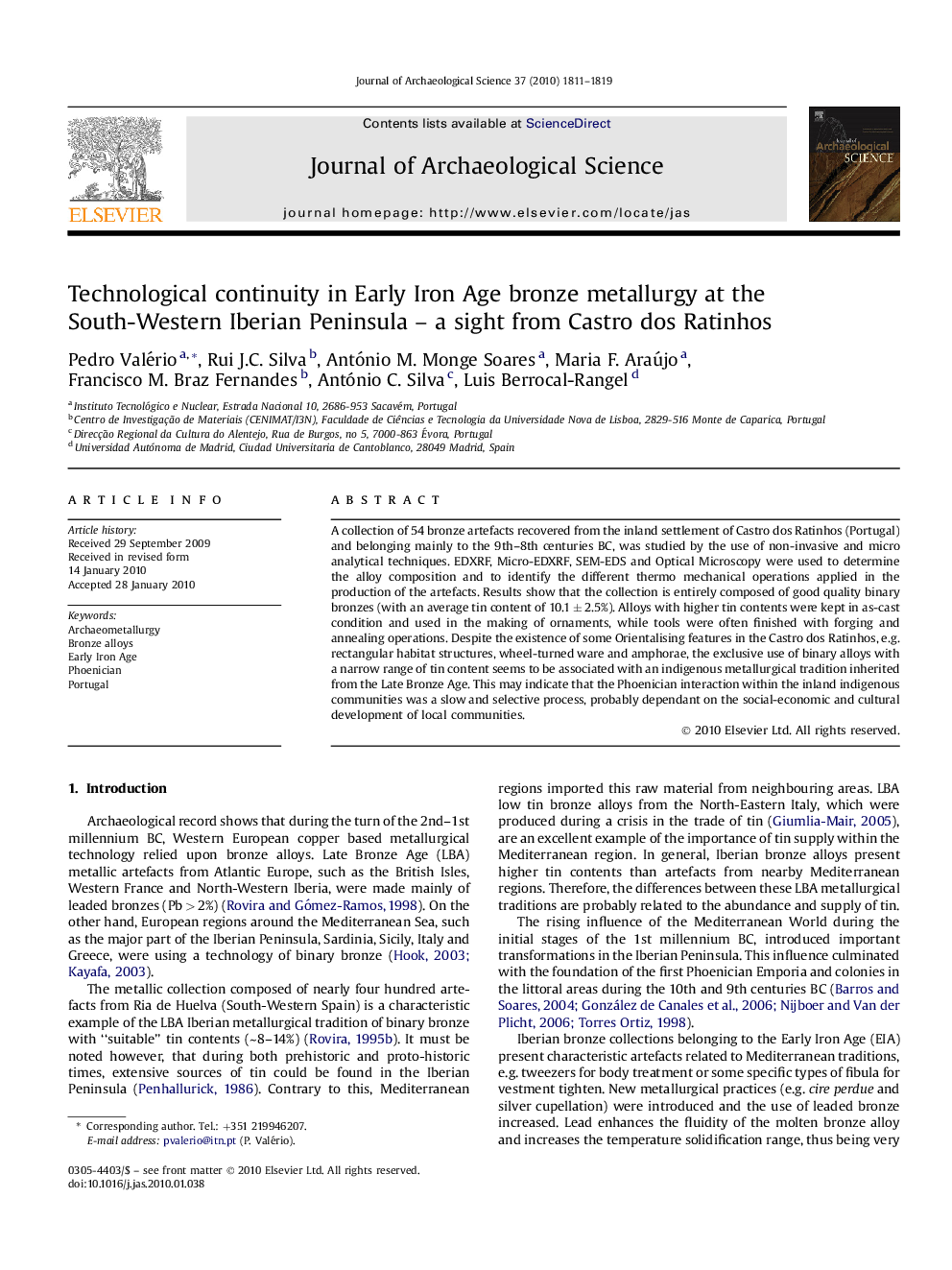| Article ID | Journal | Published Year | Pages | File Type |
|---|---|---|---|---|
| 1036704 | Journal of Archaeological Science | 2010 | 9 Pages |
A collection of 54 bronze artefacts recovered from the inland settlement of Castro dos Ratinhos (Portugal) and belonging mainly to the 9th–8th centuries BC, was studied by the use of non-invasive and micro analytical techniques. EDXRF, Micro-EDXRF, SEM-EDS and Optical Microscopy were used to determine the alloy composition and to identify the different thermo mechanical operations applied in the production of the artefacts. Results show that the collection is entirely composed of good quality binary bronzes (with an average tin content of 10.1 ± 2.5%). Alloys with higher tin contents were kept in as-cast condition and used in the making of ornaments, while tools were often finished with forging and annealing operations. Despite the existence of some Orientalising features in the Castro dos Ratinhos, e.g. rectangular habitat structures, wheel-turned ware and amphorae, the exclusive use of binary alloys with a narrow range of tin content seems to be associated with an indigenous metallurgical tradition inherited from the Late Bronze Age. This may indicate that the Phoenician interaction within the inland indigenous communities was a slow and selective process, probably dependant on the social-economic and cultural development of local communities.
